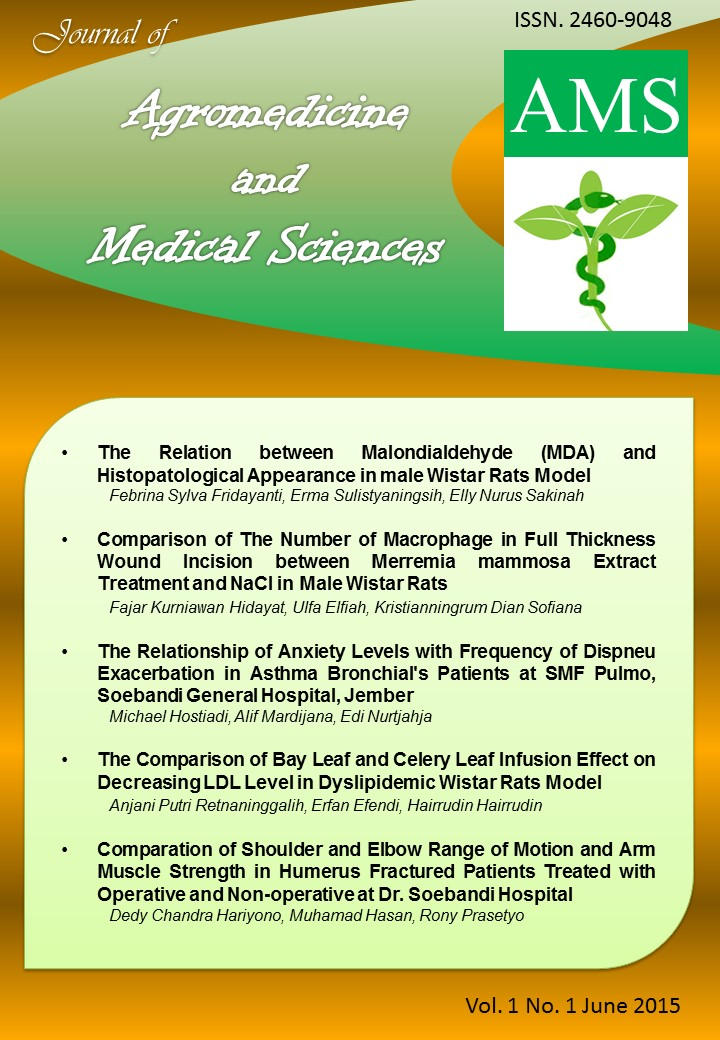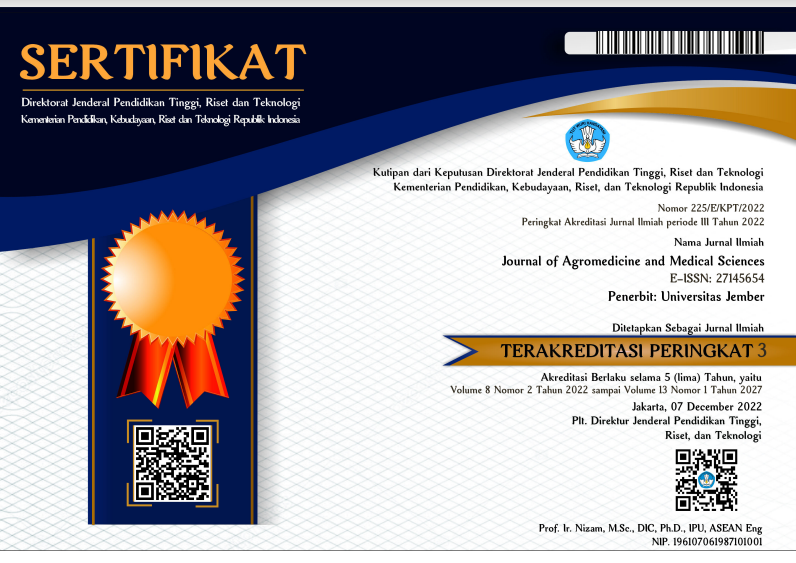The Comparison of Bay Leaf and Celery Leaf Infusion Effect on Decreasing LDL Level in Dyslipidemic Wistar Rats Model
Abstract
Coronary heart disease (CHD) is the cause of 7,3 million death globally in 2008. The main pathophysiology process that leads to CHD is atherosclerosis which is caused by high LDL cholesterol level. The aim of this study was to explore bay leaf and celery leaf infusion effect on reducing LDL cholesterol level in dyslipidemic rat model. The type of this study was true experimental research using wistar rat (Rattus novergicus) as the sample. The rats were induced by high fat diet and PTU for two weeks then each of the group were given either bay leaf infusion, celery leaf infusion, simvastatin (positive control), or aquadest (negative control) for a week. The measurement of LDL level used Friedewald formulation. Data was analyzed using paired sample t test and one way ANOVA. As the result there was a significance reduction on LDL level after treatment with bay leaf (p=0,013) and celery leaf infusion (p=0,035) but there was no significance difference between groups (p=0,293). It was concluded that bay leaf and celery leaf infusion could reduce the LDL level in dyslipidemic wistar rat but there was no difference on the capability of the two different leafs on reducing LDL level.
Keywords: dyslipidemia, LDL, bay leaf, celery leaf, wistar rats
Â























